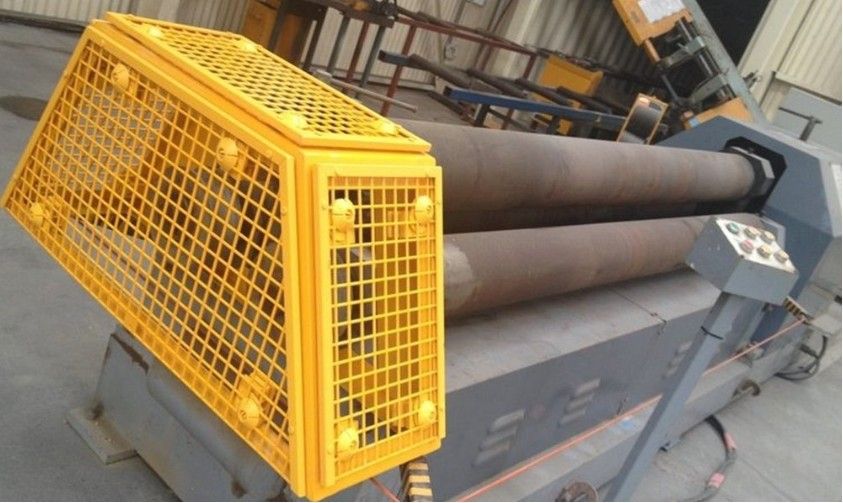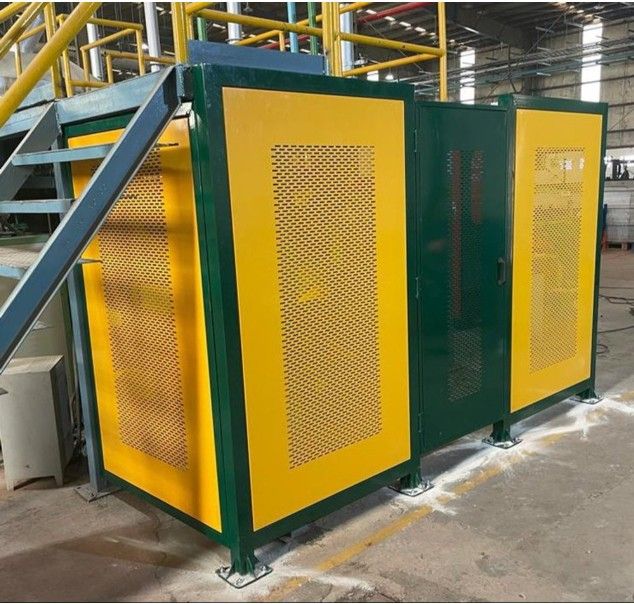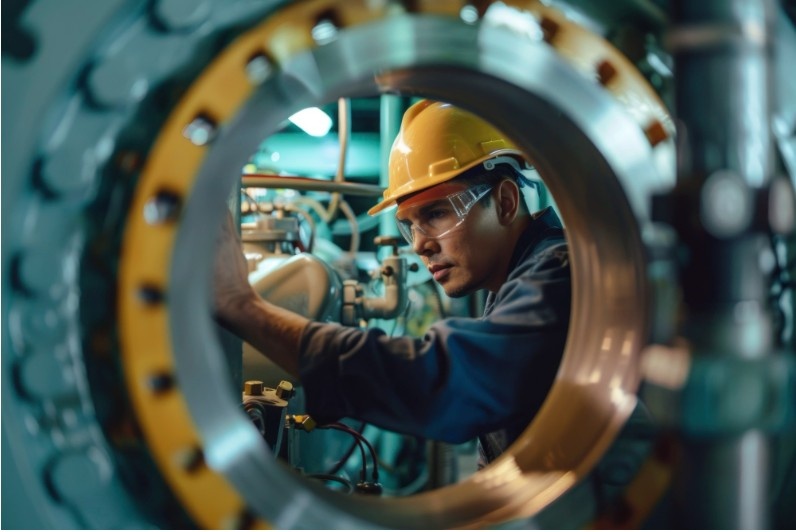It was early in my career when I walked onto a factory floor and found a worker struggling with a machine. The part wasn’t functioning properly, and the machine had already taken several small pieces of the worker’s clothing in a mechanical mishap. Thankfully, the worker wasn’t hurt, but it got me thinking about the importance of machine guards. I had learned the hard way that failing to ensure a guard is in place can lead to serious injuries. The question that always arises after these incidents is: What exactly are the criteria for a guard to be required on a machine?
Machine safety is an essential component of any industrial workspace, and understanding when and why guards are necessary can save lives. It’s not just about following rules—it’s about preventing accidents that could otherwise have been avoided with a simple guard or safety feature. In this post, I will guide you through the key factors that determine when a guard is required on a machine and how to ensure your workplace is compliant with safety regulations.
Why Are Machine Guards So Important?

Image Source: IndiaMart
How Do Guards Protect Workers?
As someone who has spent years managing industrial safety, I can tell you that the guarding of machinery is non-negotiable. Machine guards are designed to protect workers from the moving parts of machines that can pose risks such as crushing, cutting, or entangling body parts or clothing. Essentially, these guards are like a first line of defense—they prevent the operator from coming into direct contact with potentially hazardous components.
However, the key question remains: when is a machine required to have a guard? The criteria for this can be quite specific and are often determined by safety regulations, the type of machine, and the nature of the work being performed.
For example, rotating parts or components that eject material are often the most dangerous, and a guard is usually mandated to protect workers from these risks. Other machines that are subject to high-speed movements or require direct contact (such as presses or cutters) are legally required to have guards in place to prevent injury.
What Does the Law Say About Machine Guards?
Regulations, such as those established by the Occupational Safety and Health Administration (OSHA) in the United States, have specific rules regarding machine guarding. According to OSHA, employers are required to ensure that machine guards are installed in a way that protects workers from hazards. The guards must be designed and positioned so that they:
- Prevent access to moving parts.
- Protect workers from flying debris.
- Safeguard against shear points, pinch points, and rotating parts.
The criteria for installing a machine guard are derived directly from these safety standards, which vary depending on the type of machinery. Let’s go over some of the most common scenarios where guards are required.
What Machines Require Guards?
Certain machines are prone to risk for workers, so guards are not just an option—they’re a requirement. Let’s look at a few common machine types that will likely require a guard:
1. Machines with Rotating Parts (like Lathes and Saws)
Machines with rotating or spinning components, such as lathes, grinders, and saws, are common culprits in workplace injuries. Guards are necessary to prevent workers from coming into contact with sharp edges, fast-moving parts, or other dangerous components.
2. Presses and Shearing Machines
Mechanical presses or shearing machines are known for their heavy-duty operations, and they can cause severe injuries if not properly guarded. These types of machines require strong, durable guards that prevent crushing or entanglement in the press’s moving parts.
3. Conveyors and Feeders
Machines with conveyors and feeders that continuously move materials or products can cause serious injury if workers come in contact with moving parts or get pulled in. Guards are required to shield the worker from these moving elements, preventing accidents like entanglement or pinching.
4. Machines with Ejected Material (like Nail Guns and Hammers)
Nail guns, hammering machines, and machines that eject objects at high speeds can also pose significant risks to workers. Guards in these machines are designed to keep workers safe from flying debris and to contain the force of ejected material.
What Are the Exceptions to Guarding Machines?
While most machines with moving parts require some form of guarding, there are situations where a guard might not be required. For example, if a machine operates in such a way that no workers are within a reasonable distance of the moving parts or it operates in an enclosed environment, a guard might not be necessary. However, these cases are few and far between. The general rule is: if there’s a risk, there should be a guard.
How to Ensure Machine Guards Are Properly Installed

Image Source: IndiaMart
What Steps Should Be Taken to Ensure Compliance with Guarding?
Ensuring that machine guards are in place isn’t just about adhering to regulations—it’s about protecting lives. Here are the key steps to take in making sure your workplace is safe and in compliance with machine guarding standards:
1. Assess Your Machinery for Risks
The first step is to thoroughly assess the machines in your workplace to identify potential risks. Consider machines with moving parts, rotating components, and pressing mechanisms. Create a list of all machines that require guarding, and verify the safety manuals to confirm whether guards are necessary.
2. Install the Right Guard
After identifying which machines require guards, install the appropriate type of guard for each machine. This could range from fixed guards, which completely enclose the dangerous parts, to interlocked guards, which automatically stop the machine when the guard is removed.
3. Train Workers on Guard Usage
Once your machines are properly guarded, the next step is training your employees. Teach them about the importance of never bypassing or tampering with guards, and ensure they know how to operate the machines safely with the guards in place.
4. Regular Maintenance and Inspection
Guards require regular inspection for signs of wear, damage, or looseness. If a guard becomes damaged, it must be repaired or replaced immediately. Regular maintenance checks should be scheduled, and any malfunctioning guards should be addressed immediately to maintain safety standards.
FAQ: All Your Questions About Machine Guards
1. Can I remove a machine guard for maintenance?
Yes, but it’s important that only authorized personnel remove a guard for maintenance purposes, and the machine should be completely powered off. Once maintenance is complete, the guard must be reinstalled immediately before operation resumes.
2. Are there different types of machine guards?
Yes, there are several types of machine guards, including fixed guards, interlocked guards, adjustable guards, and self-adjusting guards. The type of guard required will depend on the machine’s design, the risks involved, and the accessibility of moving parts.
3. Do all machines require guarding?
In most cases, yes. However, some machines don’t require guards if the risk is minimal, such as those with no moving parts or those that are completely enclosed. In such cases, it’s essential to adhere to local regulations and industry standards.
4. How often should machine guards be inspected?
Machine guards should be inspected at least once a month, or more frequently depending on the level of usage. Any damage or malfunction should be reported and corrected immediately. Regular inspection ensures that guards are functioning properly and that workers remain safe.
Guarding the Future of Workplace Safety
When it comes to machine guarding, there’s no room for shortcuts. Ensuring that all your machines are properly guarded is not just about compliance; it’s about protecting the workers who rely on those machines every day. With a focus on safety, regular inspections, and worker education, you’ll create a safer environment that benefits everyone.
So, before you walk onto the shop floor or factory floor, remember: safety first. If there’s a chance for a worker to get hurt, ensure the right guard is in place. Stay vigilant, stay proactive, and stay safe. After all, it’s the little things—like machine guards—that can make all the difference in preventing accidents and protecting the people who matter most.



